Smocking embroidery, a centuries-old needlework technique, holds paramount importance as a captivating and versatile form of textile art.
Beyond its aesthetic allure, smocking signifies a meticulous manipulation of fabric, showcasing the artisan’s skill in shaping and sculpting textiles.
The functional benefits of smocking, such as stretch and comfort, make it a practical choice in garment design, particularly in children’s clothing.
Its deep-rooted cultural and historical significance further elevates its importance, serving as a link to traditional attire across diverse societies.
As a testament to craftsmanship and artistry, smocking allows for creative expression and individuality, contributing a timeless and personalized touch to garments and beyond.
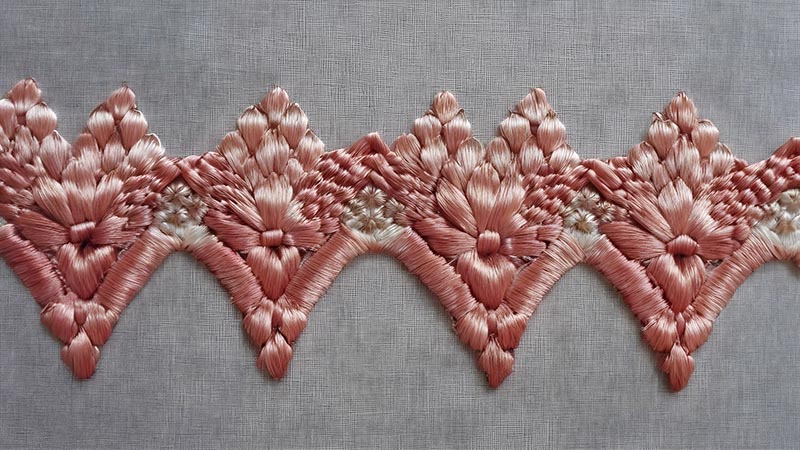
What Is Smocking?
Smocking is a centuries-old textile art form that involves gathering fabric in a regular pattern to create a decorative, gathered texture.
Typically achieved by stitching over gathered portions, smocking adds aesthetic appeal and functional flexibility to garments.
Originating in Europe during the Middle Ages, it was initially utilized for practical reasons, enhancing movement in clothing.
As fashion evolved, smocking became a symbol of craftsmanship and style, prominently featured in children’s clothing and special occasion wear.
Each region developed variations, such as the delicate geometric patterns of “English smocking.”
Experiencing a revival in the mid-20th century, smocking continues to be cherished in contemporary fashion, blending traditional techniques with modern designs and highlighting its enduring versatility and timeless elegance.
What Is the Importance of Smocking Embroidery on Fabric?
Smocking embroidery is a traditional needlework technique that decoratively gathers fabric to create a textured and elasticized surface.
This form of embroidery has been employed for centuries and continues to be cherished for its aesthetic appeal and functional advantages.
The importance of smocking embroidery on fabric extends beyond mere decoration, encompassing both artistic and practical aspects.
Aesthetic Appeal
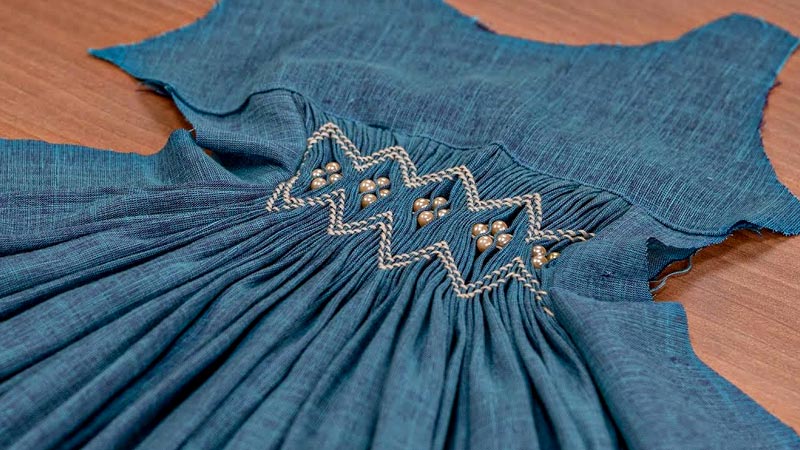
Smocking embroidery stands out as a captivating decorative technique that elevates the visual appeal of garments.
Its intricate patterns, formed through the gathering and stitching of fabric, create a three-dimensional texture that adds a touch of sophistication.
Commonly featured on cuffs, collars, yokes, and bodices, smocking introduces a unique charm to clothing.
Its timeless quality imparts a sense of tradition and classic elegance, making it a favored choice for those who appreciate vintage aesthetics.
Textile Manipulation
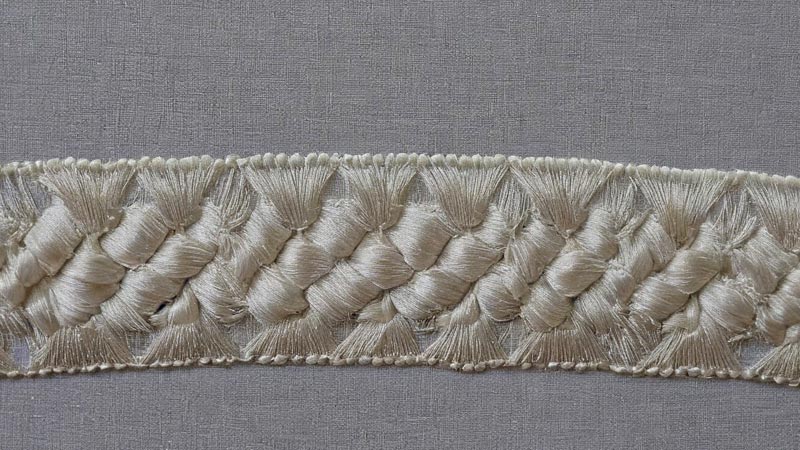
Beyond its role as a decorative element, smocking represents a sophisticated form of textile manipulation. Artisans skillfully gather and stitch fabric, transforming a plain surface into a visually dynamic one.
This intricate process showcases the craftsmanship, highlighting the ability to shape and sculpt fabric precisely.
Smocking becomes not just an embellishment but a testament to the artistry of the hands that create it.
Functionality
In addition to its aesthetic merits, smocking offers practical benefits in garment design. The stretchable areas created by the gathering allow for comfort and flexibility in movement.
This functional aspect is precious in children’s clothing, where the need for ease of movement and growth without compromising style is crucial. Smocking, thus, seamlessly blends beauty with practicality in fashion.
Cultural and Historical Significance
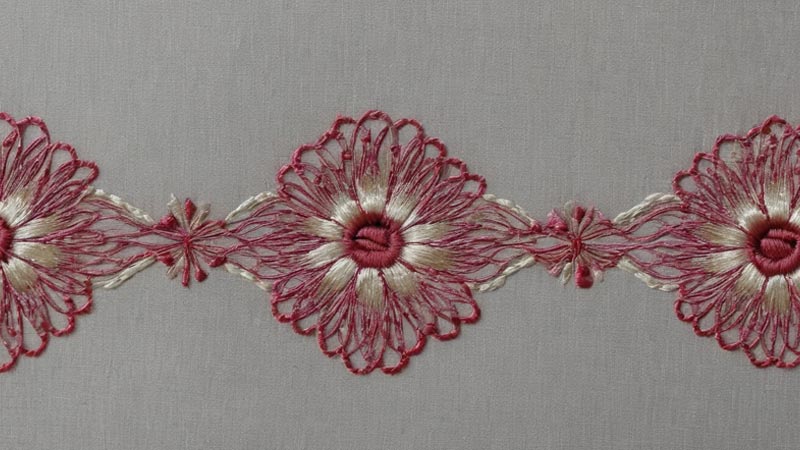
Smocking carries deep cultural and historical significance, weaving its way into the fabric of traditional clothing across various cultures.
Its presence in global attire speaks to its role as an integral aspect of cultural heritage, symbolizing the artistry and craftsmanship of generations past.
Furthermore, the incorporation of smocking in historical garments is a tangible link to the rich tapestry of human history, connecting contemporary artisans to age-old traditions.
Craftsmanship and Artistry
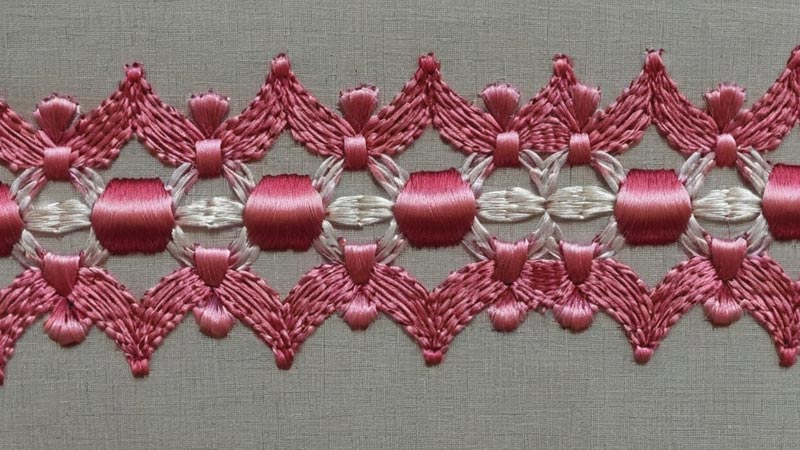
At its core, smocking is a testament to the skill and dedication of artisans. The labor-intensive nature of the technique requires meticulous attention to detail.
Each stitch becomes a brushstroke on the canvas of fabric, allowing for creative expression and individual artistry.
Smocking, as an art form, enables artisans to showcase their craftsmanship and adds a personal touch to every piece created.
Versatility
Smocking’s versatility extends its influence beyond clothing, finding application in various creative endeavors.
From home decor items to accessories, the adaptability of smocking makes it a valuable skill for artisans and designers.
Its ability to enhance diverse items with its intricate patterns and textures demonstrates the broad scope of its artistic contributions.
Educational Value
Beyond its aesthetic and functional aspects, smocking serves an educational purpose by preserving traditional sewing techniques.
Passed through generations, it becomes a conduit for transferring skills from experienced artisans to emerging practitioners.
This educational aspect ensures the continuity of knowledge, fostering an appreciation for the art of smocking and its historical significance in textile craftsmanship.
History of Smocking
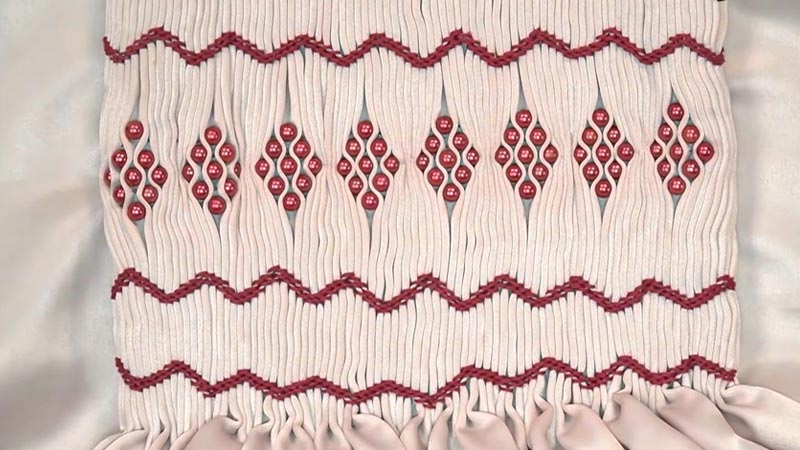
Smocking is an intricate form of embroidery and fabric manipulation used for centuries to create decorative and functional elements in clothing.
The history of smoking can be traced back to ancient times, with evidence suggesting its existence in various cultures worldwide.
Origins and Early Uses
The precise origins of smocking are elusive, but it is thought to have emerged in Europe during the Middle Ages.
Smocking initially served a practical purpose, allowing garments to be gathered for better flexibility and movement. This technique involved stitching over gathered fabric, creating a functional and decorative effect.
Medieval and Renaissance Periods
Smocking gained popularity during the medieval and Renaissance periods in Europe. Initially employed in the attire of peasants and laborers for its practical benefits, it gradually became a decorative art form.
As the technique evolved, it adorned garments across social classes, symbolizing craftsmanship and style.
18th and 19th Centuries
The 18th and 19th centuries marked the zenith of smocking’s popularity. Widely used in children’s clothing, especially on bodices and sleeves of dresses, smocking became an integral part of fashion in England and France.
The technique’s intricate designs reflected societal trends and individual creativity, making it a sought-after embellishment.
Traditional and Regional Variations
Different regions contributed to the diversification of smocking with unique variations. In England, “English smocking” was characterized by delicate, geometric patterns.
French and American cultures also developed distinctive styles, each incorporating specific stitches and designs. This regional diversity added to the richness of smocking as a textile art form.
Revival in the 20th Century
The early 20th century witnessed a decline in the popularity of smocking due to shifting fashion preferences. However, a resurgence occurred in the mid-20th century, driven by a renewed interest in traditional handicrafts.
Smocking found a place in creating heirloom-quality garments, especially for children and special occasions, as people sought timeless designs with a touch of nostalgia.
Contemporary Applications
In the 21st century, smocking continues to be cherished for its artisanal qualities. While not as prevalent in everyday fashion, it still finds a place in the collections of modern designers who blend traditional techniques with contemporary styles.
Smocking persists as a versatile and timeless craft, appreciated by those who value the combination of functionality and artistic expression in textile arts.
What Is the Purpose of Smocking?
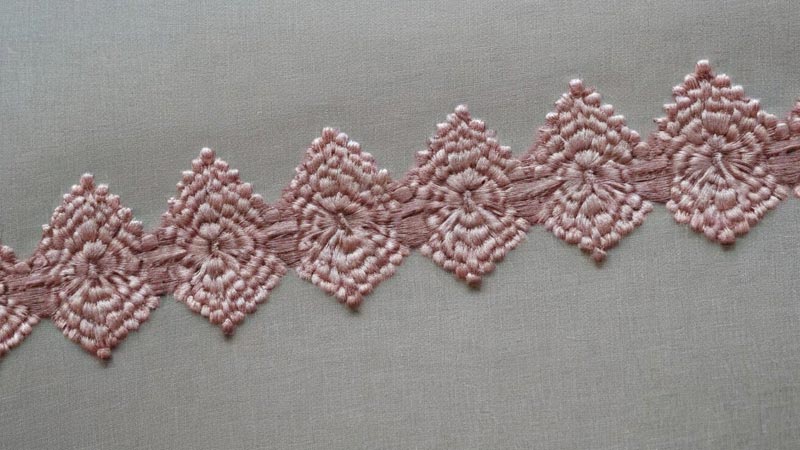
The purpose of smocking, a traditional embroidery technique involving the gathering and stitching of fabric, extends beyond mere decoration.
Smocking serves several functional and aesthetic purposes, making it a versatile and enduring craft with applications across various domains. Here are critical aspects of the purpose of smocking:
Textile Manipulation and Structure
The primary purpose of smocking is to manipulate fabric, creating texture and three-dimensional patterns. By gathering and stitching the material, smocking adds depth and visual interest to an otherwise plain surface.
Functional Elements in Clothing
Smocking serves a functional purpose in garment design, especially in children’s clothing. The gathered fabric allows for stretch and flexibility, accommodating the dynamic movements of active youngsters.
This functional aspect enhances the overall comfort and wearability of the garment.
Aesthetic Embellishment
Smocking is renowned for its aesthetic appeal. Whether used in formal wear, ethnic clothing, or casual attire, smocked patterns add a decorative and often intricate touch.
It acts as an embellishment, enhancing the visual appeal of garments and contributing to their unique and artisanal qualities.
Cultural and Traditional Significance
Smocking plays a crucial role in preserving cultural and traditional aesthetics. Its inclusion in various ethnic garments links to cultural heritage, representing a shared history and artistry.
Smocking in traditional attire ensures the continuity of cultural practices and customs.
Historical Connection and Vintage Appeal
The application of smocking in historical garments underscores its historical significance. It connects contemporary artisans to past craftsmanship, serving as a bridge between generations.
The vintage appeal of smocking contributes to a sense of nostalgia and timelessness in modern creations.
Versatility in Design
Smocking provides a versatile canvas for creative expression. Artisans can experiment with stitch patterns, colors, and fabric combinations to create unique designs.
This versatility allows for the customization of garments and other items, showcasing the creativity and individuality of the craftsperson.
Symbol of Craftsmanship
The labor-intensive nature of smocking makes it a symbol of craftsmanship. Its manual execution, often involving intricate hand-stitching, highlights the artisan’s skill and dedication.
Smocking represents the artistry and craftsmanship associated with traditional hand-sewing techniques.
Adaptability in Different Items
Smocking is not confined to clothing; it finds application in various items such as home decor, accessories, and even in restoring vintage textiles.
Its adaptability allows artisans to incorporate smocking into different creative projects, expanding its influence beyond traditional garment embellishment.
Uses of Smocking Embroidery
With its rich history and intricate design, smocking embroidery finds various uses across different domains.
Its versatility and aesthetic appeal make it a popular choice for enhancing garments and non-apparel items.
Here are some notable uses of smocking embroidery:
Garment Embellishment
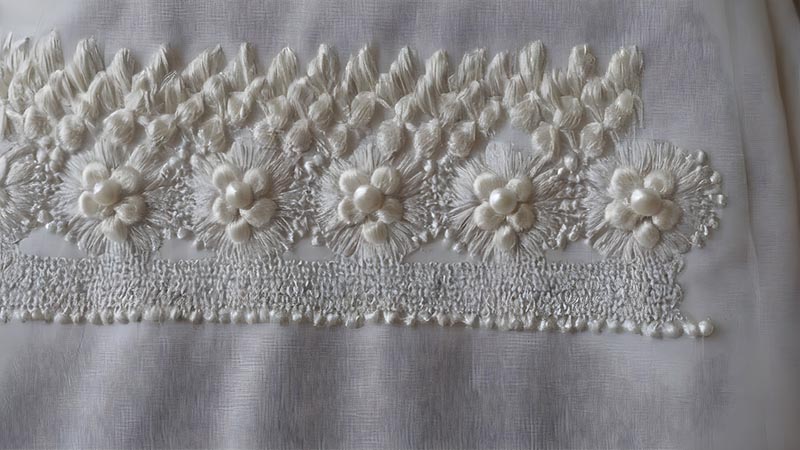
Smocking embroidery is widely embraced as a versatile technique for embellishing garments, and its applications are diverse.
In children’s clothing, it serves not only as a visually appealing decorative feature but also as a functional element.
The inherent stretchiness created by smocking allows for comfort and ease of movement, making it an ideal choice for outfits designed for active youngsters.
Furthermore, smocking often graces formal attire, contributing to the sophistication of cuffs, collars, and bodices.
The intricate patterns and textured surfaces created by smocking elevate the overall aesthetic of eveningwear and special occasion garments, providing a timeless and elegant touch.
Traditional and Cultural Apparel
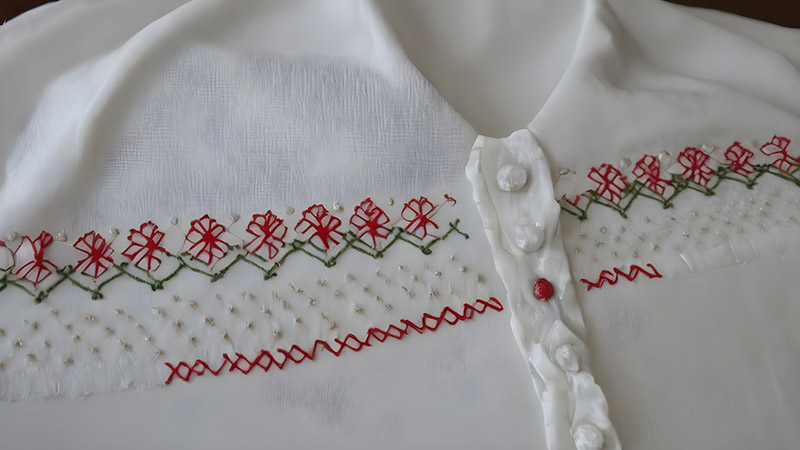
The significance of smocking extends into traditional and cultural apparel, which plays a pivotal role in preserving and showcasing cultural identity.
This embroidery technique adorns many traditional dresses and ceremonial attire, reflecting the rich diversity of cultural expressions.
Whether featured prominently or subtly integrated into the design, smocking contributes to the uniqueness and authenticity of ethnic wear, acting as a symbol of heritage and tradition.
Home Decor
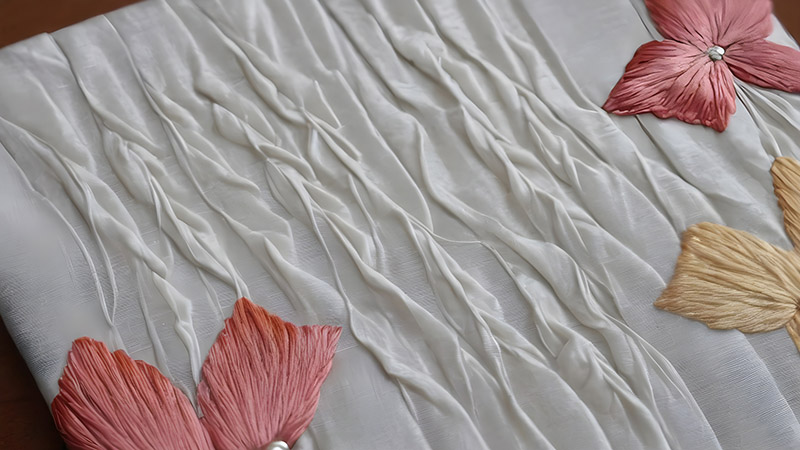
Smocking embroidery brings a touch of sophistication to home decor, finding its way into items like cushions, pillows, and table linens.
In cushions and pillows, smocking creates a three-dimensional texture that enhances the visual appeal of living spaces.
Similarly, table linens such as tablecloths, placemats, and napkins adorned with smocking elevate the dining experience by infusing an element of refinement into everyday settings.
Smocking in home decor extends beyond functionality, transforming these items into expressions of artistry within the home.
Accessories
Smocking is a distinctive embellishment in accessories, contributing to the uniqueness of handbags, purses, and scarves.
Whether used as a central design element or as a subtle detail, smocking imparts accessories an artisanal and handcrafted quality.
Handbags and purses add an extra layer of charm, turning functional items into fashion statements.
When adorned with smocking, scarves become more than just accessories; they transform into wearable pieces of art that blend functionality with aesthetic appeal.
Restoration of Vintage Textiles
One of the lesser-known but equally essential applications of smocking is restoring vintage textiles. Skilled artisans proficient in smocking techniques are crucial in preserving historical garments.
Through meticulous work, they repair damages and reinforce delicate fabrics, ensuring that vintage textiles’ intricate designs and craftsmanship endure the test of time.
Smocking becomes a tool for textile conservation, allowing for the continued appreciation of historical clothing.
Lingerie and Sleepwear
In intimate apparel, smocking makes its mark on nightgowns and robes. The delicate and romantic aesthetic of smocking is well-suited for these garments, adding a touch of luxury and femininity.
Smocking embellishments on lingerie and sleepwear create pieces beyond mere functionality, turning them into expressions of style and sensuality.
The gathered fabric and intricate patterns contribute to the allure of intimate apparel, making it a favored choice for those seeking comfort and elegance.
Art and Craft Projects
Beyond its practical uses, smocking embroidery has found a place in art and craft.
Artists and crafters often incorporate smocking into textile art projects, utilizing its versatility to experiment with various fabrics, colors, and stitch patterns.
The gathered fabric becomes a canvas for creative expression, allowing individuals to showcase their artistic talents through this traditional technique.
In the context of art and craft, Smocking serves as a medium for personal creativity, making it a cherished skill in the broader world of handmade and artisanal creations.
Smocking Embroidery Designs
Smocking embroidery designs are characterized by intricate patterns created through fabric manipulation, employing gathering and stitching techniques.
These diverse designs range from traditional geometric shapes to more contemporary and creative expressions.
The beauty of smocking lies in its versatility, allowing artisans to experiment with various stitches, colors, and fabric combinations.
Here are some common smocking embroidery designs and their characteristics:
Diamonds and Honeycombs
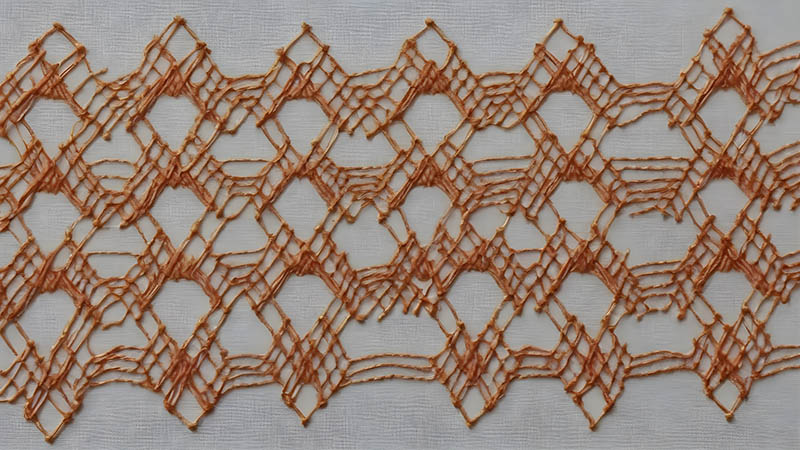
Diamonds and honeycombs are quintessential smocking embroidery designs known for their classic symmetry. These patterns often form an organized grid, creating a visually appealing and structured look.
Commonly found on yokes, bodices, and cuffs, these designs offer a timeless elegance that complements various garment styles.
The repeated use of these geometric shapes adds a sense of order and sophistication to the fabric, making them enduring choices in traditional smocking.
Wave and Wavelets
Wave and wavelet patterns introduce a dynamic and flowing element to smocking designs. These motifs create an undulating effect, mimicking the gentle movement of waves.
Often chosen to evoke a sense of grace and femininity, these patterns work well on garments where a more fluid and organic appearance is desired. The rhythmic repetition of waves contributes to a visually pleasing and harmonious overall design.
Cable and Wave Combination
Combining cable and wave patterns results in more complex smocking embroidery designs. The interplay between raised and lowered areas creates a textured surface that adds depth and visual interest to the fabric.
This combination is favored for more formal or elaborate garments, where the intricate details of the smocking can enhance the overall sophistication of the design.
Picture Smocking
Picture smocking represents an advanced and artistic form of smocking embroidery. Artisans create recognizable images or scenes within the smocked area using this technique.
Flowers, animals, and intricate details are meticulously stitched to tell a visual story. This elaborate and detailed approach requires high precision and skill, making picture-smocking a showcase of the artisan’s craftsmanship and creativity.
Trellis and Vine Patterns
Trellis and vine patterns in smocking draw inspiration from the natural world. These designs mimic the appearance of climbing plants, adding a botanical and organic element to the fabric.
Popular in both traditional and modern contexts, trellis and vine patterns contribute to a sense of natural beauty and bring a touch of the outdoors to smocked garments.
Wave and Shell Combinations
Combining wave and shell patterns in smocking creates designs inspired by oceanic elements. The resulting patterns often feature scalloped edges and undulating lines, resembling the ebb and flow of waves.
These sea-inspired designs add an elegant and graceful touch to smocked garments, evoking a sense of serenity and beauty.
Pleated Patterns
Pleated smocking involves creating patterns through precise fabric pleating, typically in parallel lines. This technique produces designs with a more structured and tailored appearance.
Commonly used in formal and tailored garments, pleated smocking adds sophistication and precision to the fabric. The orderly pleats create a textured surface that enhances the overall visual appeal.
Contemporary and Abstract Designs
Contemporary smocking embraces abstract and unconventional designs, allowing artisans to experiment with asymmetrical patterns, irregular shapes, and innovative stitching techniques.
These modern interpretations of smocking showcase the adaptability of the craft to contemporary fashion and artistic expression.
Abstract smocking designs allow artists and designers to push boundaries and create unique, avant-garde pieces.
Layered Smocking
Layered smocking involves stacking multiple rows or layers of smocked patterns, creating a multi-dimensional and textured effect.
This technique adds complexity and richness to the overall design, making it a choice for special occasions and high-fashion garments.
The layered approach allows for intricate and detailed smocking, resulting in visually stunning and sophisticated garments.
How to Do Smocking on a Sewing Machine?
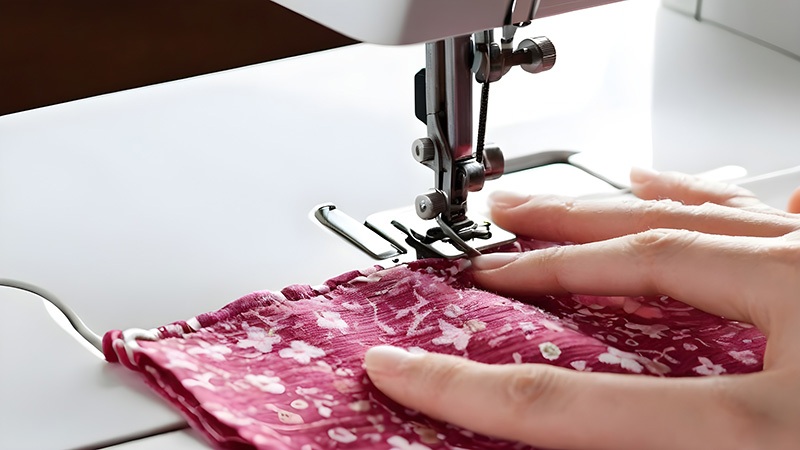
Smocking on a sewing machine offers a more efficient and precise way to achieve this traditional embroidery technique.
While hand-smocking requires careful manipulation of fabric and precise stitching, machine-smocking simplifies the process, making it accessible to a broader audience.
Here’s a step-by-step guide on how to do smocking on a sewing machine:
Materials Needed:
- Sewing machine with a zigzag stitch capability.
- Fabric to be smocked.
- Smocking elastic thread.
- Regular thread in a color that complements the fabric.
- Sewing pins.
- Iron.
Procedure:
1. Choose Your Fabric
Selecting the suitable fabric is crucial for successful machine smocking. Opt for a lightweight fabric with good gatherability, as heavier fabrics may not be as effective.
Cotton is popular for smocking projects due to its breathability, ease of manipulation, and ability to hold gathers well.
Other suitable fabrics include voile, lawn, or lightweight blends, providing the desired drape for smocked garments.
2. Wind the Bobbin with Elastic Thread
Ensure your sewing machine has a bobbin wound with smocking elastic thread. This specialized thread is designed to create the elasticity needed for effective smocking.
When winding the bobbin, gently stretch the elastic thread to ensure it is wound tightly and consistently.
Proper tension in the elastic thread is essential for achieving well-defined gathers during the smocking process.
3. Set Up Your Machine
Install the bobbin wound with an elastic thread to prepare your sewing machine for smocking. Thread the machine with regular thread in the needle, choosing a color that complements your fabric.
Set the machine to a zigzag stitch, essential for creating the flexibility and stretch required in the smocked area.
Adjust the stitch width and length based on your desired smocking pattern and the fabric you are working with.
4. Mark Your Smocking Rows
Before starting the smocking process, mark the rows where you want the gathers to appear. Use fabric chalk or washable fabric markers to make clear and easily removable guidelines on the fabric.
The spacing between rows depends on your desired smocking pattern and the overall look you wish to achieve. Accurate markings contribute to even and well-spaced gathers.
5. Pin Rows for Stability
Pinning the marked rows is crucial to ensure stability and prevent fabric shifting during the smocking process. Place pins along the marked lines, securing the layers of fabric together.
This helps maintain the intended spacing and ensures that the fabric stays in place as it passes through the sewing machine. Proper pinning contributes to the precision and uniformity of the smocking design.
6. Adjust the Tension
Experimenting with the tension settings on your sewing machine is a crucial step in achieving the desired gathering level for your smocking project.
Begin by adjusting the tension based on your machine’s specifications and the fabric you are working with. Conducting a tension test on a scrap piece of fabric before starting on your main project is advisable.
This lets you fine-tune the tension settings and ensures that the elastic thread gathers the fabric evenly and effectively.
7. Stitch Along the Marked Rows
With the tension adjusted, begin stitching along the marked rows using the zigzag stitch setting on your sewing machine.
The zigzag motion of the stitch catches the elastic thread, creating the gathers in the fabric. Maintain a steady and consistent pace as you guide the fabric through the machine, ensuring that each row is stitched uniformly.
Pay attention to the alignment with the marked rows to achieve a neat and well-organized smocking pattern.
8. Repeat for Additional Rows
If your smocking design involves multiple rows, repeat the smocking process for each designated row. Consistency in tension and spacing is critical to achieving an even and cohesive smocked area.
Repeat the stitching process for each row, ensuring that the gathers align seamlessly across the fabric.
This step is essential for creating a professional-looking finish, especially in more complex smocking designs.
9. Steam and Press
Once the smocking is complete, use a steam iron to set the stitches and encourage the fabric to gather. Hold the iron slightly above the fabric, allowing the steam to penetrate and shape the smocked area.
The steam setting helps the elastic thread contract and ensures the smocking retains its desired shape.
Gently press the smocked fabric with the iron to smooth out any wrinkles and enhance the overall appearance of the gathers.
10. Finish the Project
Complete your project by incorporating the smocked fabric into your desired garment or item. Depending on the design, you may need to adjust your pattern or garment pieces to accommodate the gathered fabric.
Ensure that the smocked section aligns correctly with the overall design. Finish the edges of the smocked fabric as needed, and proceed with the construction or assembly of your final project.
Whether it’s a smocked dress, blouse, or another item, careful attention to detail in finishing will contribute to a polished and professional result.
FAQs
Why is smocking important in garments?
Smocking enhances garments aesthetically and functionally, adding texture and allowing for comfortable movement.
What cultural significance does smocking hold?
Smocking symbolizes cultural heritage, commonly found in traditional ethnic attire worldwide.
How does smoking contribute to textile artistry?
Smocking is a canvas for artistic expression, showcasing craftsmanship through intricate stitching.
Why is smocking considered versatile?
Smocking adapts to various fabrics and applications, extending beyond clothing to home decor and restoration.
How does smocking preserve traditional sewing techniques?
Smocking ensures the continuation of traditional skills by passing down knowledge from one generation of artisans to the next.
To Recap
Smocking embroidery emerges as an invaluable art form, weaving together aesthetics, functionality, and cultural heritage.
Its enduring appeal lies in its ability to transform plain fabrics into visually dynamic, textured surfaces, showcasing the skill and dedication of artisans.
Beyond its ornamental charm, smocking’s practical benefits, such as stretch and comfort, underscore its relevance in garment design.
The cultural and historical threads woven into smocking connect us to diverse traditions, reflecting a rich tapestry of human heritage.
As a medium for creative expression and a bridge to the past, smocking embroidery stands as a timeless testament to the artistry, versatility, and enduring significance within textile craftsmanship.
Leave a Reply